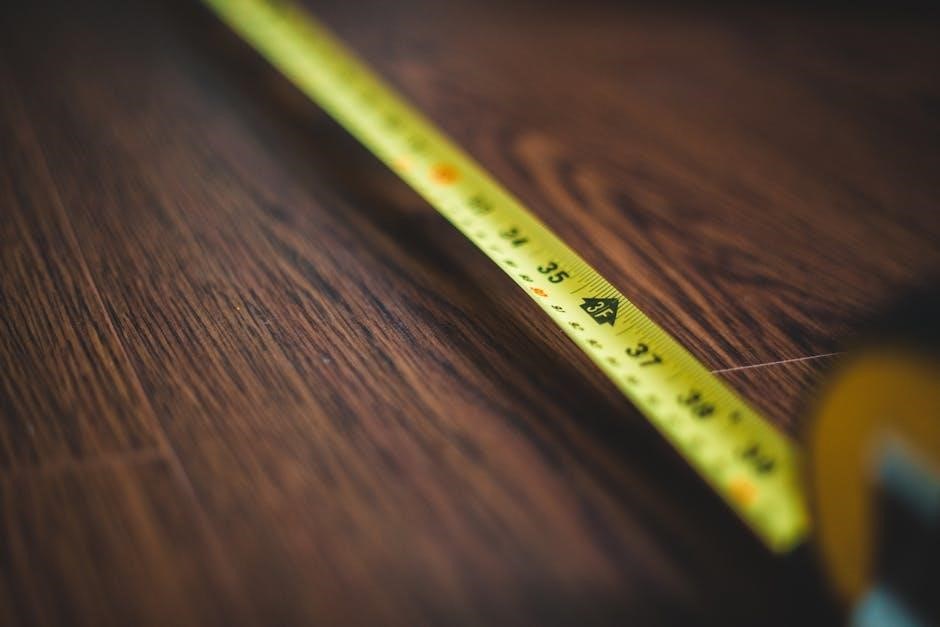Skateboard dimensions guide helps users choose correct sizes,
considering length, width, and wheelbase for optimal performance.
Understanding the Importance of Skateboard Size
Skateboard size plays a crucial role in determining the overall performance and comfort of the rider. A skateboard that is too small or too large can affect the rider’s balance, stability, and ability to perform tricks and maneuvers. The size of the skateboard can also impact the rider’s style and preferences, with different sizes suited to different types of skating. For example, a smaller skateboard may be preferred by street skaters who need to perform tight tricks and maneuvers, while a larger skateboard may be preferred by cruisers who need stability and speed. Understanding the importance of skateboard size is essential for riders to choose the right size and type of skateboard that suits their needs and preferences. By considering the size of the skateboard, riders can improve their overall skating experience and reduce the risk of injury. The correct size also enhances the rider’s confidence and ability to progress in their skating skills.

Skateboard Length and Width Considerations
Length and width considerations affect skateboard performance, stability, and maneuverability greatly always.
Standard Skateboard Length and Its Variations
The standard length of a skateboard is typically between 28 and 33 inches, with the most common length being around 32 inches. This length provides a good balance between stability and maneuverability. However, there are variations in skateboard length that can affect the way the board performs. For example, shorter boards are often preferred by street skaters who need to perform tight tricks and maneuvers, while longer boards are often preferred by cruisers who want a more stable ride. The length of the skateboard also affects the wheelbase, which is the distance between the front and rear wheels. A longer wheelbase can provide more stability, but can also make the board more difficult to turn. Ultimately, the choice of skateboard length depends on the individual skater’s preferences and skating style. Different manufacturers may also have slightly different length variations, so it’s worth checking the specifications before making a purchase.

Wheel Size and Its Impact on Skateboarding Style
Wheel size affects skateboarding style, with smaller wheels suited for street and larger wheels for cruising and speed, influencing overall performance and ride quality always matters.
Relationship Between Wheel Size and Skateboard Discipline
The relationship between wheel size and skateboard discipline is crucial, as different disciplines require specific wheel sizes for optimal performance. For instance, street skating typically requires smaller wheels, around 50-53mm, to facilitate tight turns and tricks. In contrast, cruising and longboarding require larger wheels, often between 60-70mm, to achieve higher speeds and smoother rides. The wheel size also affects the overall stability and maneuverability of the skateboard, making it essential to choose the right size for the specific discipline. Additionally, the hardness of the wheels also plays a significant role, with softer wheels providing more grip and harder wheels offering more speed. Understanding the relationship between wheel size and skateboard discipline is vital for skaters to enhance their performance and enjoy their riding experience. By selecting the appropriate wheel size, skaters can optimize their skateboard’s performance and improve their overall skating skills.

Choosing the Right Skateboard Size Based on Age and Shoe Size
Skateboard size depends on age, shoe size, and skating style considerations.
Considerations for Kids, Teens, and Adults in Selecting Skateboard Size
When selecting a skateboard size, considerations vary by age group, with kids requiring smaller boards for better control and maneuverability. Teens and adults need larger boards for stability and support.
For kids, a balanced size is necessary to reduce injuries and improve learning curves, while teens and adults require correct sizing to enhance performance and prevent accidents.
Additionally, shoe size plays a crucial role in determining the ideal skateboard size, as it affects the rider’s comfort and control over the board.
By considering these factors, riders can choose the perfect skateboard size to suit their needs, regardless of age or skill level, and enjoy a safer and more enjoyable skateboarding experience.
Overall, selecting the right skateboard size is essential for kids, teens, and adults alike, as it directly impacts their skating experience and overall performance.

Additional Factors to Consider in Skateboard Dimensions
Other factors to consider when choosing skateboard dimensions include the type of skating, personal preference, and skill level.
The concave shape of the board, which refers to the upward curve of the board between the trucks, can affect the rider’s control and balance.
Wheelbase, the distance between the front and rear trucks, also plays a crucial role in determining the board’s stability and maneuverability.
Furthermore, the material and construction of the board can impact its durability and performance.
Considering these additional factors can help riders make an informed decision when selecting a skateboard, ensuring they find the perfect board to suit their skating style and preferences.
By taking the time to evaluate these factors, riders can optimize their skating experience and enjoy a more comfortable and rewarding ride.
Ultimately, careful consideration of these factors is essential for finding the ideal skateboard dimensions.



